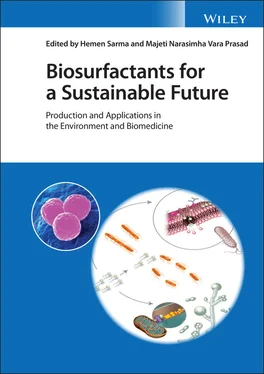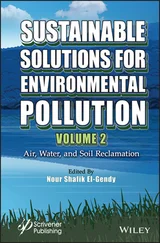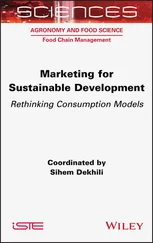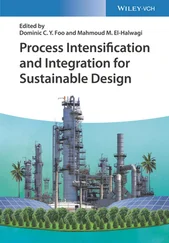25 20 Biotechnologically Derived Bioactive Molecules for Skin and Hair‐Care Application 20.1 Introduction 20.2 Surfactants in Cosmetic Formulation 20.3 Biosurfactants in Cosmetic Formulations 20.4 Conclusion References
26 21 Biosurfactants as Biocontrol Agents Against Mycotoxigenic Fungi 21.1 Mycotoxins 21.2 Aflatoxins 21.3 Deoxynivalenol 21.4 Fumonisins 21.5 Ochratoxin A 21.6 Patulin 21.7 Zearalenone 21.8 Prevention and Control of Mycotoxins 21.9 Biosurfactants 21.10 Glycolipids 21.11 Lipopeptides 21.12 Antifungal Activity of Glycolipid Biosurfactants 21.13 Antifungal and Antimycotoxigenic Activity of Lipopeptide Biosurfactants 21.14 Opportunities and Perspectives Acknowledgements References
27 22 Biosurfactant‐Mediated Biocontrol of Pathogenic Microbes of Crop Plants 22.1 Introduction 22.2 Biosurfactant: Properties and Types 22.3 Biosurfactant in Agrochemical Formulations for Sustainable Agriculture 22.4 Biosurfactants for a Greener and Safer Environment 22.5 Conclusion References
28 Index
29 End User License Agreement
1 Chapter 1 Table 1.1 Parameters A and B of the Corrin–Harkins equation. The number of fi... Table 1.2 Examples of cmc values of biosurfactants.
2 Chapter 2 Table 2.1 Comparison of screening techniques for determination of biosurfacta...
3 Chapter 3 Table 3.1 Summary of various agricultural and industrial byproducts used for ... Table 3.2 The byproduct of foodstuffs and vegetable oil used in the productio...
4 Chapter 4 Table 4.1 Biosurfactants derived from bacteria. Table 4.2 Biosurfactants derived from fungi. Table 4.3 Heavy metal removal efficiency of different biosurfactants.
5 Chapter 5Table 5.1 Summary of different laboratory‐scale MEOR ex situ assays performed ...Table 5.2 Summary of different laboratory‐scale MEOR in situ assays performed ...
6 Chapter 6Table 6.1 Components of crude oil [8, 9].Table 6.2 Overview of some of the recent and successful biosurfactant assiste...
7 Chapter 7Table 7.1 Important and most toxic PAHs with their key properties.Table 7.2 Low and high molecular weight biosurfactants with enhanced biodegra...
8 Chapter 8Table 8.1 Status of the essential micronutrients in the soil throughout the w...Table 8.2 A summary of the essential functions, deficiency symptoms of micron...Table 8.3 The essential micronutrients in humans [3].Table 8.4 The properties and hazardous effects of the synthetic surfactants m...Table 8.5 The most well‐studied biosurfactants, their typical producer organi...
9 Chapter 9Table 9.1 Biogenic synthesis of nanoparticles using different plants, microbe...Table 9.2 Highly researched microbial biosurfactants [45, 46].Table 9.3 Different types of nanoparticles synthesized by biosurfactants.
10 Chapter 10Table 10.1 The minimum inhibitory concentration (MIC) of rhamnolipids against...Table 10.2 Surfactants used in catanionic mixtures.
11 Chapter 11Table 11.1 Examples of biosurfactants used as antimicrobial agents.Table 11.2 Main surfactants used as antibiofilm agents.Table 11.3 Biosurfactants used in clinic or with clinic use potential.
12 Chapter 12Table 12.1 Biosurfactant and their microbial source.Table 12.2 Different biological potential of biosurfactant‐based nano materia...
13 Chapter 13Table 13.1 Glycolipids biosurfactants and their economic importance in the bi...Table 13.2 Lipopeptides and lipoproteins classes of biosurfactants and their ...Table 13.3 Major classes of biosurfactants and their economic importance in t...
14 Chapter 14Table 14.1 Novel strategies and potential mechanisms for antimicrobial and an...
15 Chapter 16Table 16.1 Antibiotic resistance adopted by various microbes.
16 Chapter 17Table 17.1 Biosurfactant producing organisms.Table 17.2 Upstream and downstream process for production of biosurfactants.
17 Chapter 18Table 18.1 Bioactive characteristics of other types of common biosurfactant c...Table 18.2 Dermatological and cosmetic potentials of biosurfactants.
18 Chapter 19Table 19.1 HLB values and possible applications.Table 19.2 Patents issued on personal care formulations containing biosurfact...
19 Chapter 20Table 20.1 List of chemicals used in cosmetic formulations, their functions, ...Table 20.2 Biosurfactant production companies for commercial uses in cosmetic...Table 20.3 Antimicrobial activity of biosurfactants against potential dermal ...
20 Chapter 21Table 21.1 In vitro evaluation of the antifungal activity and antimycotoxigenic e...Table 21.2 In vivo evaluation of the antifungal activity and antimycotoxigenic ef...
1 Chapter 1 Scheme 1.1 Alkaline hydrolysis of a triglyceride to obtain soaps. Figure 1.1 Schematic representation of the structure of some surfactants. Figure 1.2 Bifacial structure of cholic acid. Figure 1.3 Typical surface tension vs ln (surfactant) plot showing the break... Figure 1.4 Typical plot of a sigmoidal curve. Example ϕ = I 1/ I 3(rati... Figure 1.5 Plot of logarithm (aggregation number) vs logarithm (alkyl chain ... Scheme 1.2 Structure of synthetized gemini surfactants. Figure 1.6 Structure of viscosin. Figure 1.7 Structure of biosurfactants monorhamnose and dirhamnose rhamnolip... Figure 1.8 Chemical structures of the acidic (AS) and lactonic (LS) C18:1 so... Figure 1.9 Schematic structure of a surfactin.
2 Chapter 2 Figure 2.1 Application of the metagenomic technique for environmental manage... Figure 2.2 Collation of metagenomics and DNA stable isotope probe (DNA‐SIP):...
3 Chapter 3 Figure 3.1 Schematic representation of the adhesion of bio surfactant molecu... Figure 3.2 Key stages used for bioproduct formation in bioreactor. Figure 3.3 Diagrammatic presentation of one stage and two stage fermentation...
4 Chapter 4 Figure 4.1 Biosurfactant mediated heavy metal remediation. Figure 4.2 Classification of biosurfactants and the respective producing mic... Figure 4.3 Structure of dirhamnolipid. Figure 4.4 Structure of sophorolipids. Figure 4.5 Structure of surfactin.
5 Chapter 5Figure 5.1 Schematic representation of in situ Microbial Enhanced Oil Recove...
6 Chapter 6Figure 6.1 Overview of the prominent degradation pathways for aliphatic and ...Figure 6.2 Mode of action of biosurfactants for enhanced hydrocarbon degrada...
7 Chapter 7Figure 7.1 Major sources of PAHs in the environment.Figure 7.2 Biodegradation pathway of PAHs by microorganisms.Figure 7.3 Biosurfactant‐enhanced PAH degradation mechanism.
8 Chapter 8Figure 8.1 Schematic representing the types of biosurfactant based on ionic ...Figure 8.2 The structures of some of the most well‐studied biosurfactants be...Figure 8.3 Mechanism of action of biosurfactants to enhance the solubility a...
9 Chapter 9Figure 9.1 Graphic representation of typical (bio)surfactant molecules, such...Figure 9.2 Different types of biosurfactants.Figure 9.3 Different types of agro‐industrial wastes used as carbon/nitrogen...Figure 9.4 Biosurfacatnt production, optimization, and nanoparticle synthesi...Figure 9.5 Applications of nanoparticles in various potential fields.
10 Chapter 10Figure 10.1 Applications of synthetic colloids.Figure 10.2 Structures of amino acid‐based surfactants. (a) Linear amino aci...Figure 10.3 Formation of pseudo double‐chain surfactants from monocatenary a...Figure 10.4 Typical phase diagrams of catanionic mixtures.Figure 10.5 Single chain and double chain arginine‐based surfactants used to...Figure 10.6 Cryo‐TEM micrographs of samples prepared with ALA. (a) Coexisten...Figure 10.7 Schematic representation of the molecular structure of lysine‐ a...Figure 10.8 Schematic representation of the head groups’ distance in an anio...Figure 10.9 Reduction viability (Viab) and flow cytometry (FC) results of tr...Figure 10.10 Reduction viability (Viab) and flow cytometry (FC) results of t...Figure 10.11 Relationship between surfactant hemolysis obtained with Licheny...Figure 10.12 Chemical structure and schematic representation of catanionic g...
Читать дальше












